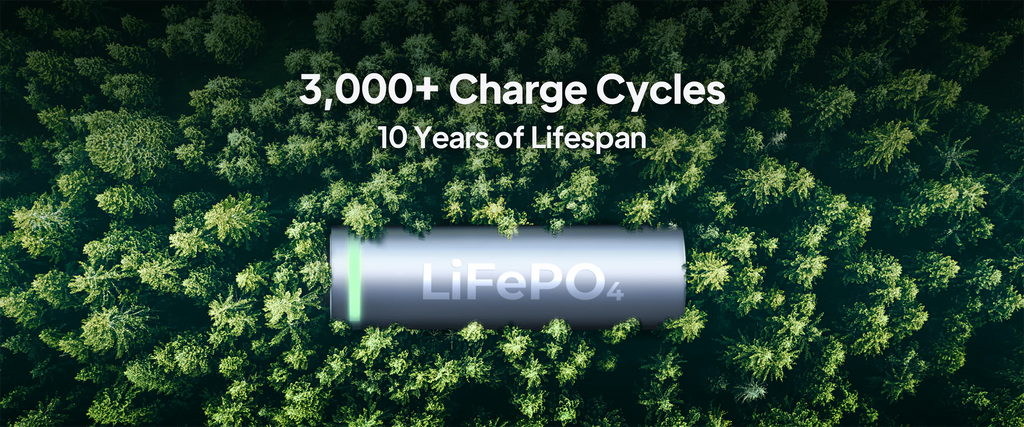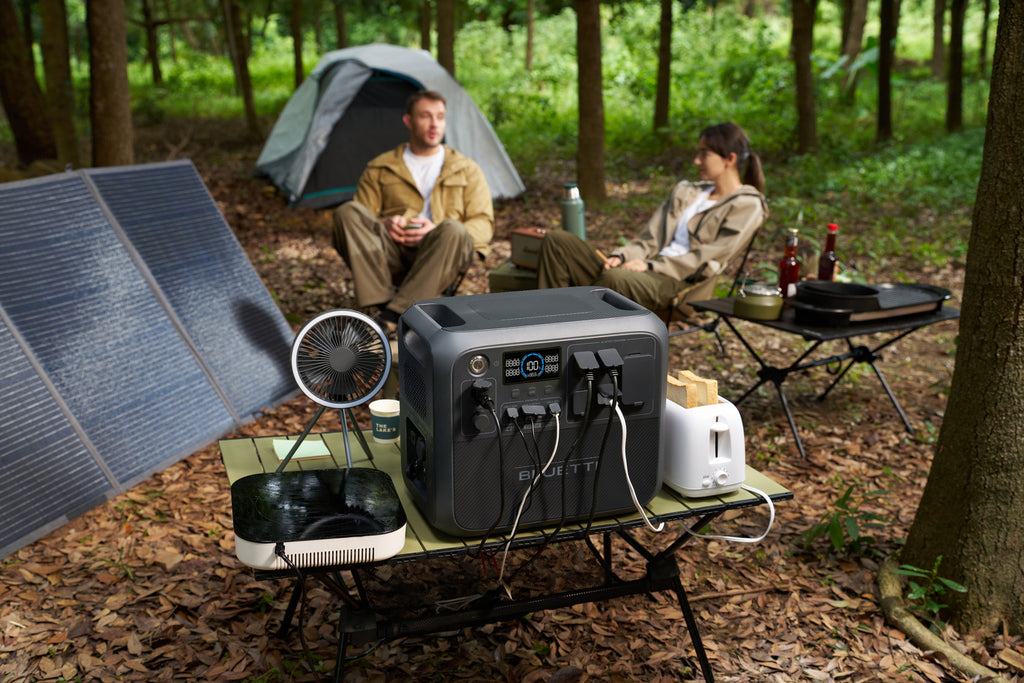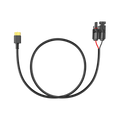Your cart is empty
Shop our productsLithium ion batteries have become the go-to solution for solar battery storage systems. Not only are they safer and energy dense but also faster to charge and more environmentally friendly.
They come in two variations: nickel manganese cobalt (NMC) and lithium iron phosphate (LFP) batteries. In the LFP vs NMC article, we will look at their differences and best applications. Let’s get into it.
NMC and LFP (LiFePO4) Batteries
NMC (nickel manganese cobalt) batteries are some of the most popular lithium ion batteries. You are probably using an NMC battery - they power laptops and smartphones. An NMC battery is made up of nickel, manganese, and cobalt.
Most solar batteries are also made of NMC, thanks to their efficiency and low maintenance. In fact, they are more popular than lead acid batteries.
LFP (lithium iron phosphate) batteries are another type of lithium ion batteries that is gradually gaining traction on the market. The iron and phosphate compounds are used to make the cathode.

These materials are less expensive compared to cobalt that is used in NMC batteries. Furthermore, LFP batteries have less toxic materials than NMC options. Currently, companies are producing more LFP batteries for energy storage since they are more stable and safer. And BLUETTI power stations are made of LFP, meaning they are safer and more efficient than conventional power stations.
NMC Batteries (Pros and cons)
Pros
- High energy density: NMC batteries have a higher energy density than LFP counterparts. They are therefore used in applications that need high power output. They are ideal options for applications that require more energy stored in a compact battery.
- Long cycle life: NMC batteries are designed to endure everyday tear and wear, allowing them to last for over a decade. This longevity makes them exceptional options for long-term energy storage, especially in EVs.
- Safe to use: While cobalt might make NMC batteries expensive, it makes them safer. Cobalt reduces the risk of thermal runaway, meaning they can withstand high temperatures without getting damaged.
- Balanced performance: The combination of nickel, manganese, and cobalt enables NMC batteries to have balanced energy density and produce just the right power output. This makes them a versatile storage option for numerous energy applications.
Cons
- High initial cost: Compared to LFP batteries, NMC options are more expensive. This is attributed to the cobalt material which is expensive to produce.
- Bulky: NMC batteries are heavier than LFP batteries and might require more space for installation, as they tend to be larger in size.
LFP Batteries (Pros and cons)
Pros
- High charging and discharging efficiency: Unlike NMC batteries, LFP options have a 90% charge and discharge efficiency, meaning they can last for extended periods.
- Exceptional safety performance: LFP are the safest batteries on the market. Since they cannot overheat or decompose, they can be used in extreme environments and still offer much-needed performance.
- Longer cycle life: LFP batteries have over 2000 charging cycles. In fact, BLUETTI power stations have over 2500 charging cycles. Theoretically, most LFP batteries can last for 8 to 10 years.
- Eco-friendly: One of the chief benefits of using LFP batteries is that they don’t pollute the environment. They are free of heavy metals and are non-toxic, meaning disposing of them won’t impact the soil.
Cons
- Lower energy density: LFP batteries have a lower energy density compared to NMC batteries. This affects their energy specification and size. Furthermore, they cannot be used in energy-intensive applications.
- Slower discharging rate: Compared to NMC batteries, they have a slower discharging rate. While the difference might be minute, they might affect the performance of power-hungry applications.
- Reduced voltage: The voltage of an LFP cell is lower than that of an NMC battery. As such, LFP batteries designed for energy intensive applications might be bulkier and larger.
LFP vs. NMC- What are the differences?
Let’s compare LFP vs. NMC and see how they stack up.
|
LFP |
NMC |
|
|
Safety |
Safer and better thermal stability thanks to their chemical structure |
Generally safe but lacking in thermal stability. Proper thermal management should be observed. |
|
Cost |
More cost-effective per cycle. Ideal for long-term applications. |
More expensive due to the materials used. |
|
Life cycle |
Have longer a longer charging cycle, making them ideal for applications where longevity is crucial |
Have a respectable cycle life than lead acid batteries, but not as long as LFP batteries. |
|
Energy density |
Have lower energy density making them preferable for specific applications. |
Have a higher energy density, hence used in energy-intensive applications. |
|
Eco-friendliness |
More environmental friendly since they are made of non-toxic materials |
Less eco-friendly due to the presence of cobalt. |
How to Choose the Battery You Need?
So, should you buy an LFP or NMC battery?
Well, there are aspects you need to consider. For example, if you need a battery for a power-intensive task, NMC batteries are your best bet as they have a higher energy density. That’s why they are prevalent in the electric vehicles industry.
On the other hand, an LFP battery is ideal for everyday home use as you can buy one with the adequate capacity.
Consider the environment the battery will be operating. LFP batteries work exceptionally well in extreme temperatures since they have better thermal stability. You’ll need special thermal management to use NMC batteries in extreme weather conditions.
Also, think about your budget. Lithium ion batteries are not cheap and NMC units are more expensive than LFP options. So, if you are on a budget, consider buying lithium iron phosphate batteries.
Think safety too. LFP batteries are safer than NMC units since they have better thermal stability. They are not prone to overheating and catching fire. Furthermore, they are made of less toxic materials.
Related articles: What Is mAh (Milliamp Hour): Understanding Battery Capacity
Solar Battery vs. Traditional Battery: Unveiling the Pros and Cons
Why does BLUETTI Use LFP Batteries?

LFP batteries have industry-standard features that are beneficial to you. And this is the main reason why BLUETTI uses LFP units. For one, LFP batteries are more cost-effective per cycle. This means that there’ll be a better return on investment in the long run.
Additionally, LFP batteries are safer than NMC units. For example, they do not require specialized thermal management to use them in warm and hot environments. This means you can install BLUETTI batteries anywhere in your house.
And since BLUETTI champions sustainability, we prefer LFP as they have less toxic materials. It allows you to dispose of them without impacting the environment. NMC batteries have cobalt that is extremely toxic.
LFP batteries are also easier and faster to charge and can be packaged in a small unit. In fact,BLUETTI batteries don’t require enormous floor space. You can even place them on a table and you’ll still get exceptional performance.
What You Can Do with BLUETTI Products?
You can use BLUETTI products for emergency purposes, backup power, and for outdoor activities. And among them are portable power stations. Here are three units you can use for backup power or outdoor activities.
BLUETTI EB3A Portable Power Station | 600W 268Wh

The EB3A is a low-capacity yet high-performing power station. The portable generator boasts of a 268Wh capacity which is enough to charge small devices and keep small appliances running for extended periods. In fact, it can run a mini fridge for at least three hours and can recharge your laptop three times. Quite the thing for an abrupt camping trip.
And if you are in a hurry to recharge it, you’ll enjoy the fast charging feature. This feature charges the power station from 0 to 80% within 30 minutes. All you need is an AC outlet and 200W solar panels. The best part about the power station is that it comes with six ways to recharge it. You can use a car outlet, solar panels, a generator, or an AC outlet. This bolsters its versatility significantly.
Thanks to the BMS (Battery Management System), you can rest assured of top-notch safety. You don’t have to worry about overheating or overcharging. And since it uses LiFePO4 batteries, it can last for a decade without compromising efficiency and performance. Like other BLUETTI power stations, it comes with numerous outlets (nine outlets) so you can plug in most of your appliances.
BLUETTI AC200L Portable Power Station | 2,400W 2,048Wh

Another portable power station you can use for your backup power or camping activities is the AC200L. This model comes with a 2048Wh massive capacity. Just the right capacity to power large appliances. And thanks to the 3,600W Lifting Power, starting appliances such as heating systems will be a bliss.
But that’s not all, you can expand its capacity to 4096Wh by connecting the BLUETTI B230 expansion battery. Another impressive feature is its ability to recharge from 0 to 80% in 45 minutes. There are 6 ways to recharge this model ranging from lead-acid battery, a generator, solar panels, and a car outlet.
You’ll love the convenience the built-in app affords you. With it, you can control and monitor the portable power station without leaving the comfort of your seat. As with any portable power station, it is quiet, eco-friendly, and easy to use.
BLUETTI EP500Pro Solar Power Station | 3,000W 5,120Wh

Finally, you can get the EP500Pro that will provide enough power to run most, if not all of your appliances. Having a 5120Wh capacity, the power station can store energy that can last for days, if not weeks. And thanks to its high power output, you can rest assured it will run many appliances simultaneously.
For easier mobility, it comes with rubberized wheels. Moving it between rooms or campsites will be a walk in the park. This premium model also comes with a smart touchscreen so you can adjust settings with ease. But that’s not all, you also get an app for uninterrupted remote control. The app is compatible with iOS and Android.
It comes with 15 outlets allowing you to connect your phone, laptop, and other devices. Charging it is also seamless as you can use an AC or T500 input. While a tall power station, it is slim enough to fit in tight spaces. With over 3500 cycles, it can last for 10 years while providing much-needed performance.
Final Thoughts
In this LFP vs NMC article, we’ve seen that LFP batteries are safer, cost-effective, and more environmentally friendly. On the other hand, NMC batteries have a higher energy density. However, they are more toxic and expensive. Of the two, LFP batteries are the best for residential applications.
Shop products from this article
Be the First to Know
You May Also Like

What Does a 30% Federal Solar Tax Credit Mean and How to Apply?
Governments around the world are offering programs that encourage homeowners to switch to solar energy. Among the most notable programs is the 30% Federal Solar Tax Credit. It reduces your...

Deadly Flooding Devastates U.S. South and Midwest — What You Need to Know

















































































































































































































































